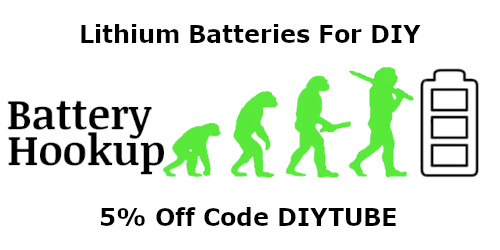Restoring A Dry & Sulfated Lead Acid Battery
Restoring A Dry & Sulfated Lead Acid Battery
I will show you how to restore a bone dry and badly sulfated lead acid battery and bring it back into service again. I have restored countless batteries through the years using these methods. This requires no special chemicals or strange concoctions to work.
Even the small sealed, spill proof lead acid batteries will eventually dry out with time. Then they will no longer take a charge with conventional means. The battery plates will become badly sulfated as well. At this time most people dispose of their batteries.
Today I show you how to open up and refill your spill proof lead acid batteries. This works for large and small batteries just the same.
I am also working on a huge book behind the scenes which will guide you through troubleshooting, restoring and rebuilding lead acid batteries. When I am finished I plan to release the book at the same time as I release my electronic battery desulfating device.
By the way, I have over 5,000 Lithium Ion batteries in my lab now. I got them all from Battery Hookup. Click the banner above, use the discount code and save 5% on your next purchase of new or used batteries.
Smaller sealed lead acid batteries like the one I show in my video (link at the bottom of this article) are easy to open up and service. I used a pocket tool to carefully pry up on the lid and worked my way around until it came away easily. At this point you can see small rubber caps on the battery cells. Larger batteries may have a more strongly glued on lid. Take your time and be careful not to damage the battery (or short it) while you work.
You will also want to use eye protection, clothing protection and gloves when working on lead acid batteries. Sulfuric acid will cause burns and will quickly burn a hole in your clothes.
One at a time I lifted the rubber cap off each cell and poured in distilled water - very slowly. Just pour in a tiny bit and let it soak into the mats before adding more. This will take a few minutes per cell. And, depending on the size of your battery it may take up to half a gallon of water - maybe more.
Once the water level can be seen above the battery plates I replaced the rubber cap and moved on to the next cell. Again work slowly and give the water time to sink into the mats and plates of the battery. When you are finished, check all the cells once more. Water may have settled in while you worked.
When all the battery cells are filled up you can replace the cover of the battery. For these smaller batteries I like to use tape to seal them off. This allows me to work on the battery again later for maintenance. Although these are sealed lead acid batteries, some evaporation will occur over time. Generally this is what causes end of life along with sulfation on the plates.
Now, depending on the level of sulfation on the battery plates you may be able to recharge your battery with a normal charger. But in most cases you will have to now desulfate your battery.
In an up coming video I will show you why the cheap battery desulfators on the market will not work for most batteries. One huge point is that at this time your battery will likely have a very low voltage. I have restored some batteries with as low as 0.5 volts with good success. But the commercial battery desulfators only have two leads on them. They actually require a pretty decent battery to even work in the fist place because they take their power from the battery they are connected to. They are best kept for maintaining a good battery to prolong its life and prevent sulfation in the first place.
The cheap commercially available battery desulfators can present other problems as well which I will cover in a future video. One big danger is that of destroying any circuits that may be connected to the battery being desulfated.
I am working on a battery desulfating circuit that has its own power supply and can restore just about any sulfated lead acid battery, no matter what its voltage is at the time. It will not be able to restore a battery with physical damages such as a hole in the case or destroyed plates and shorts. But it can desulfate a lead acid battery very well.
The book I am working on will even show you how to repair batteries with physical damage though. So hand in hand with my battery desulfator there will not be many lead acid batteries that you cannot restore.
Both the book and the battery desulfator will be available soon. So stay tuned and watch for updates on my YouTube channel and my articles right here.
You can watch the video here:
About the Author
| Troy Reid |




